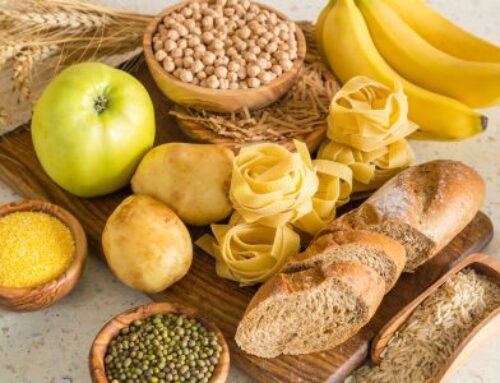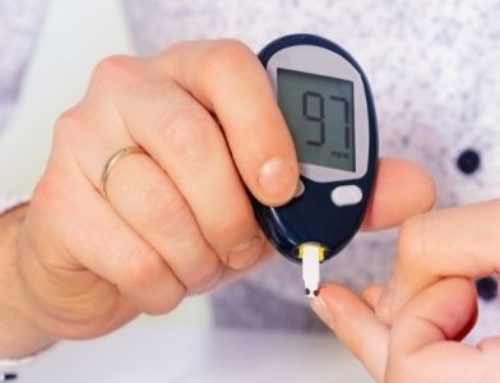
Yes, you can.
Contrary to popular belief, Type 2 Diabetes is not an “old person’s disease”. It is increasingly diagnosed in younger people, with the trend in Australia showing an earlier age of disease onset.
The process of diabetes development begins before birth, and it is the combination of genetic factors, followed by lifestyle and environmental factors, that determines how early the disease occurs in later life.
Let’s take a look at a couple of key factors in developing Type 2 Diabetes as a young adult:
Genetics
The programming of your genes takes place before you were even born. There is evidence that poor maternal nutrition and eating patterns, in combination with lifestyle factors such as stress and lack of physical activity, can lead to insulin-resistant genes being programmed in a developing foetus.
Additionally, there are genetic disorders which can cause insulin resistance syndromes, with some ethnicities at a higher risk of genetic traits that increases their likelihood of early onset Type 2 Diabetes.
Physical Activity
Physical inactivity and sedentary behaviour is a problem across all age groups, starting with children who are spending more time sitting and participating in screen-time. This sedentary behaviour increases as children grow, with studies showing decreasing participation in sport and physical activity in teenagers and young adults.
Physical inactivity is a major factor that influences insulin sensitivity, which then leads to insulin resistance. The good news is that insulin sensitivity can be improved and maintained with regular physical activity, regardless of weight status.
Insulin Resistance
Insulin resistance, which is related to a loss of insulin sensitivity, is a driving force behind Type 2 Diabetes development. Apart from genetics and physical activity levels (as highlighted above), insulin resistance can also be worsened by
- Eating patterns: High fat intake, excessive calorie intake
- Puberty: Hormonal fluctuations, development of Polycystic Ovarian Syndrome in girls
- Obesity: often due to over-nutrition (excessive calorie intake) and physical inactivity
As you can see, factors such as your genes or events that occurred in infancy and early childhood are things that you might not be able to change. Other lifestyle factors, however, are well within your ability to influence.
Here are 3 key things you can do now to prevent early onset of Type 2 Diabetes
1. Be active:
I have written about this before, but it is high time we start looking at exercise and physical activity as a tool to improve insulin sensitivity, and not just for weight loss. It does not have to be an uninspiring hour-long session at the gym, and you do not need to go and buy special “activewear” to do it. Just pick an activity that gets your bum off the couch. This article here has great tips to get you back into doing regular physical activity.
2. Eat a balanced diet:
The problem with our eating patterns is that we are simply eating too much. Too much of the things that we’re not meant to be eating so often, and too little of the things that we’re meant to be eating more of. This lack of balance is super-charging the factors that make insulin resistance worse. Throw in fad diets based on weak science, and you have a recipe for disaster.
NO, you do not need more fat in your diet. Most of us are doing quite well in that department before even considering a high-fat “keto diet”.
NO, you do not need to stop eating wholegrain-rich foods and fresh, whole fruit. Most of us are simply not eating enough of them to begin with, favouring their highly processed forms instead. It is the refined carbohydrate foods that you should be focusing on, as they are easy to over-consume and eat in excess. And it is the overconsumption of calories that you want to avoid, whether it is from carbs or any other macronutrient.
YES, you do need to be eating more vegetables. It’s the only way to balance out your portions on a plate, to keep you full on smaller portions of carbohydrate and protein foods. As a nation, we are simply not eating enough vegetables. You do not need to be a vegan or vegetarian to eat more vegetables – just add more on your plate! See here for ideas on boosting the vegetable content of 6 popular family meals.
3. Lose that 5%!
Being told to lose 25kg when you weigh 100kg is enough to make anyone lose heart. Yet so many people have been told the same, likely based on a “healthy BMI”. But get this – the science tells us that just by simply shifting 5% of your body weight, it is clinically significant enough to improve insulin sensitivity and insulin production. For the average 100kg person, this is a mere 5kg. HOW ACHIEVABLE IS THAT!?!?!
So don’t despair if all you’ve done is shift a “measly 3kg”. You’re on the right track, and it’s not measly and insignificant. Small victories count and every bit of that weight that you successfully keep off matters, even if you don’t get to a BMI of 25. You rock that 5%!!
Melissa Yip is our diabetes expert and can help you manage insulin resistance.




